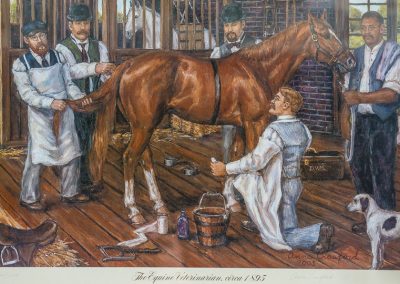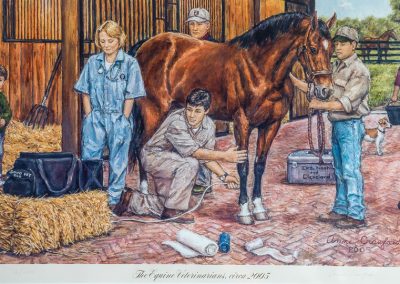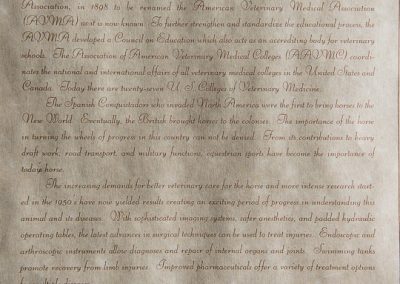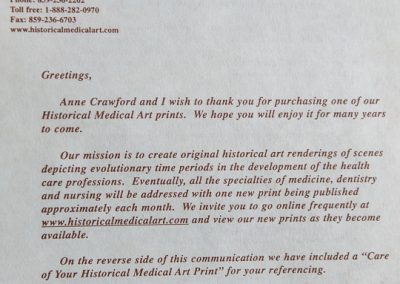Horsemanship – Irrefutable Law Ten
A horse is a horse. Horses are living, breathing beings with thoughts, needs, wants and desires. They have a unique digestive system. They live in herds with a unique system of social rules. We humans have captured them forcing upon them our own social needs and interests, feeding systems and our demands for work and war. Their history with humans is about 4000 years old when the oldest historical connection with them exists in central Asia now called Kazakhstan (9th largest country in the world). Female warriors of this area, called Amazon women, were notoriously skilled on horseback and are considered the origins of the calvary. They remained virgins until they had killed at least 3 enemy warriors.
Horses since this time have been used for war, exploration and trade. They became an integral part of human civilization. Approximately 10,000 horses were killed in 1815 in Napoleon’s last battle of Waterloo. For those not good with math that was 205 years ago almost to the day of me writing this. 100 years later World War One took place in the same area where about 8 million horses plus asses and mules died from combat, gas, starvation and disease.
The last 100 years there has been a transition in the industrial world to where horses, asses and mules have been replaced by machines. Horses are now considered recreational but in non-industrial countries, equids are still used as beasts of burden. The United States horse population is now about 6.5 million but there remains about 100 million horses, asses and mules world wide with Ethiopia having the largest population of working equids.
**CONTINUED IN ARTICLE TAB**
Related material – Sometimes I have a lot of material here that I have written, podcasted, video blogs and other things. They will be listed in this tab.
Use the browser back button or menu to return to the index of topics.
⬇︎ CLICK ANY IMAGE BELOW TO REVEAL MORE INFORMATION ⬇︎ The images below are from the AAEP commemorative paintings showing the difference between 100 years of equine veterinary care. I have a blog in the related materials tab that will explain my thoughts but I’ll give you a hint – look at where the eyes are focused 100 years ago versus today.
A horse is a horse. Horses are living, breathing beings with thoughts, needs, wants and desires. They have a unique digestive system. They live in herds with a unique system of social rules. We humans have captured them forcing upon them our own social needs and interests, feeding systems and our demands for work and war. Their history with humans is about 4000 years old when the oldest historical connection with them exists in central Asia now called Kazakhstan (9th largest country in the world). Female warriors of this area, called Amazon women, were notoriously skilled on horseback and are considered the origins of the calvary. They remained virgins until they had killed at least 3 enemy warriors.
Horses since this time have been used for war, exploration and trade. They became an integral part of human civilization. Approximately 10,000 horses were killed in 1815 in Napoleon’s last battle of Waterloo. For those not good with math that was 205 years ago almost to the day of me writing this. 100 years later World War One took place in the same area where about 8 million horses plus asses and mules died from combat, gas, starvation and disease.
The last 100 years there has been a transition in the industrial world to where horses, asses and mules have been replaced by machines. Horses are now considered recreational but in non-industrial countries, equids are still used as beasts of burden. The United States horse population is now about 6.5 million but there remains about 100 million horses, asses and mules world wide with Ethiopia having the largest population of working equids.
Looking at America and the other countries where horses have been replaced by machines, it is important to look at this transition. Within 100 years – from 1920 to 2020 – civilization has moved from major dependency on horses to not needing them at all. Lost in this transition is the mentorship where new horse owners learned from those with experience. Many of these mentors were lost to war or were so scared from what they saw in the plight of war horses that they eagerly transitioned to cars. From 1920 to 1960, industry and farming became mechanized. This is an instant in historical time. In 1960 few people had tractors and the interstate system of roads was only an idea. Hay was still cut by horses pulling mowers and then it was stacked by hand and stored loose in the barn loft. By 1970 hay bales were available everywhere as tractors and baling machines became more affordable and trucks with good roads became abundant. Farm feed stores sprouted up in the mid 1970’s and sweet feed became popular to promote the store’s existence. Up until then, grain was shipped in 96 pound sacks (1 bushel of good quality oats was 32 pounds and 3 bushels fit in a burlap sack – 3×32=96). As men evaporated in the horse world and were replaced with women, the grain companies soon changed their bags to 50 pounds for acceptance to their new demographic.
I want to remind you that I started working with horses professionally in 1973. I lived in Florida in 1972 and Interstate 95 only got you as far as Jacksonville and then started again in south FL. Over 4 hours were needed to drive 2 lane roads between these 2 points. In 1973 I was driving a small dump truck to the railroad yard in New York to unload 96 pound sacks of oats from a box car. I lived through this transition and I remember how horses were cared for and fed. When I graduated from vet school, half of my class were women and few of us, male and female, were interested in horses. Today less than 5 vet students graduating from a class of 115 go into horses. In this vacuum of change, the influx of people trying to compete in mentoring horse owners has exponentially been filled by agenda driven companies. This has only brought confusion or what I call, complexication.
I have created another course on decomplexicating equine nutrition but I want to touch on some things here as it applies to horsemanship. Through gut inflammation, our horses today are living with mild to moderate pain in their digestive tracts, joints and even in their mind. To connect with a horse or a person in chronic unease is a lot more difficult than if all systems are working perfectly. To start to connect with all horses it is imperative that we, as the caretaker of these horses, get the systems working perfectly. This includes feeding them like a horse, removing the oral pain from sharp teeth, finding tack that fits well and becoming the best rider. These laws are not about becoming a good rider so I will leave that to someone else. These laws are about keeping you safe and enjoying the connection. It is also about preserving your investment both in money and in the time of training.
Horses are an investment with the cost of purchase usually the least cost. Every day costs money in feed and in labor. Every hour spent in training is an hour lost to something else. Every horse show or event missed due to injury, lameness or illness is lost money and time. Let me be very clear here. If you feed and maintain your horses as they were developed over the past hundreds of thousands of years, you will get the most out of them in emotional connection, money spent and time invested.
But we don’t.
In the millisecond of time from 1920 to today we have overthought how to care for them in many areas and in others we have given no thought at all. First, and probably most important of all, is to start feeding horses as they were developed to eat. Unfortunately most horse owners no longer have the grazing land to support the number of horses they care for. As a substitute we now have grass that was grown then cut and preserved in bales to be fed at a time when pasture is unavailable. I have written several blogs on this which I encourage you to read. The problem now is that we continually feed last summer’s grass (hay) throughout the year which in essence is hurting the horses. The primary reason for this is that horses need to go through a period where food is limited. This actually promotes health at a cellular level and thus at the whole horse system. But there is more we are doing that is causing our horses to not feel well.
Grain was introduced to horse diets when people started to move from the country to the city and they needed to be fed. The demand for more intense farming to feed these people placed more work on the horses used to pull the machines. To prevent starvation, grain was added to the diets to replace the glycogen in their muscles and keep the fat on their backs. What was unknown at the time was that feeding horses grain raised their intake of the element called Phosphorus (P). This prevented the horse from absorbing Calcium (Ca) needed to keep the horse from slipping into a coma and dying. Horses absorbed their supply of Ca in their bones to stay alive but their bones became soft and bendable. Back then it was known as “Miller’s Disease” as it was the horses used in milling that suffered. Today we call this Rickets.
Preventing Miller’s disease came from a simple and inexpensive solution. To grain they added dicalcium phosphate. While this raised the P even higher, it raised the Ca even more and the result was the end of Miller’s disease. What they did not realize was that when the diet is high in P and Ca, the absorption of another element called Magnesium (Mg) was blocked. Horses on grain with added dicalcium phosphate became deficient in Mg. The primary sign of horses deficient in Mg is hyperexcitability. Today it is popular to add Mg to horse diets to keep them calm but in reality, removing the cause works better.
When discussing horsemanship and connecting with horses I often meet horses that are hyperexcitable. These horses become difficult to connect with and sometimes medications are needed especially if other factors are present such as stress from an injury. However where owners are willing to remove the cause (all grains with dicalcium phosphate), these horses quickly become more cooperative.
Grain however does more than add minerals that affect their chemical makeup. Grains are not a natural feed for horses. In the wild it is only found for a week or so and only where it is grown. The grains are actually the seeds of plants which do at least 3 things to the gut of the horse. 1) They bring a high load of starch which is glucose which triggers the production of body fat, creates metabolic syndrome including insulin resistance and also causes the chronic deficiency of protein in the body. 2) They carry proteins that can penetrate the lining of the gut, called leaky gut syndrome, which allows the entrance of foreign materials into the body that cause inflammation. 3) They disrupt the normal structure of the trillions of bacteria living within the digestive tract which leads to the formation of uncomfortable and even painful ulcers as well as malabsorption.
This is a good place to tell a story explaining the importance of getting the gut system correct in developing a connection with your horses. I was asked at a farm my advice on a horse who was uncooperative and even dangerous. The chief complaint was that the horse was resistant to load on a trailer and when they started to drive, he went crazy hurting himself. In addition, he was difficult to train, often running away with her and not performing the dressage moves to do well in the field of 3 day eventing. He did not like to be brushed or have the girth tightened and was impossible to clip his hair coat. He was even lunging over the stall door as she walked by. She was ready to get rid of the horse but how do you get rid of a nearly unrideable, difficult and almost dangerous horse?
She listened to our advice and stopped feeding her horse everything except pasture, hay, mined salt and water. The response was remarkable. All the ill behavior went away. He became willing to load by just walking on and would travel anywhere without a fuss. Her dressage scores went up and when I saw her 6 months later, the owner (now 6 months pregnant) had just finished body clipping her horse as it just stood there without objection.
Stories like this are abundant on my blog comments, my social feeds and in my emails from all around the world. Even non-sweating horses (anhidrosis) start to sweat again in 3 to 4 days after the cause of gut inflammation is removed. If you are having any behavioral issues or are having connection issues with your horses then the first thing I recommend is removing everything a horse should not be eating. This includes all grains and seeds, grain byproducts (middlings, hulls, pulps), oils, balancers, supplements, treats (fruit, root vegetables, candies, cookies) and mineral salt licks (corn syrup and molasses). Only feed pasture, hay (grass or legume), mined salt (Himilayan) and water. If you need to treat (you should not but only say “Thank you!”) then feed a peanut in the shell (a legume) or a hay cube. Start a journal of all your observations and see what happens. If your horses are like the others who have tried this you just may get the connection you have been looking for.
Please feel free to read all the other blogs on nutrition or enroll in the nutrition course to understand why this is so important.
Getting the nutrition correct and eliminating gut inflammation will allow your horse to see that you are listening to them. But there are some other things to do. I will not go into how to ride a horse here but there are some things you need to be aware of that will improve your connections when riding.
If you are riding with a bit, this part is essential reading. Even if you don’t use a bit, there is a degree of pain in every horse created by the opposition of sharp enamel points against the soft tissues of the oral cavity. This pain for most horses is accepted by altering the movement of the jaw and the tongue. Evidence can be seen in all horses as they age with bite angles changing and early loss of cheek teeth due to avoidance. All of this is well explained in the teeth section. From my experience of working on horse teeth since 1983 and over 70,000 mouths, there is no room for debate on this. Please understand that all pain, no matter how mild, will affect the horse as it does humans.
Adding a bit moves the tongue into a different position pushing it back into sharp edges that the horse is not used to. Keeping the mouth closed with a nose band makes less space for the tongue to escape these sharp points. To gain a better connection, all of these sharp edges need to be filed smooth without compromising the purpose of the teeth grinding the food. Removing the excess sharp enamel allows the tongue top be repositioned by the bit comfortably as well as preserves the health of the teeth and oral cavity (see the article on the tongue). Good horsemanship requires us to pay attention to the little things and making a safe environment for the tongue when using a bit is one of them.
We can add other issues we as humans apply to the horse that are confused with a horse’s unwillingness to be used for the intended purpose. This would add even more length to this already long article. Poor fitting saddles, overweight riders, improper conditioning, over use of the hands on the mouth, long toes / low heels of the hooves, improper hoof trimming, poor stabling and more! The point here is that a horse is a horse with thoughts, feelings, wants, needs and desires. As horse owners we all need to listen and be aware of this and remove all obstacles in their existence before we start cussing and calling the horse names.
I am very sure now, after this section, that you would remove all obstacles perceived by the horse as interfering with connection and then you would all stand in front of the mirror first before you start calling the horse derogatory names, right?
- Additional tables
- Links to other in house articles
- Links to outside articles
- Reference material used in developing this topic.
There are no related articles here if you don’t see linked items.







Responses